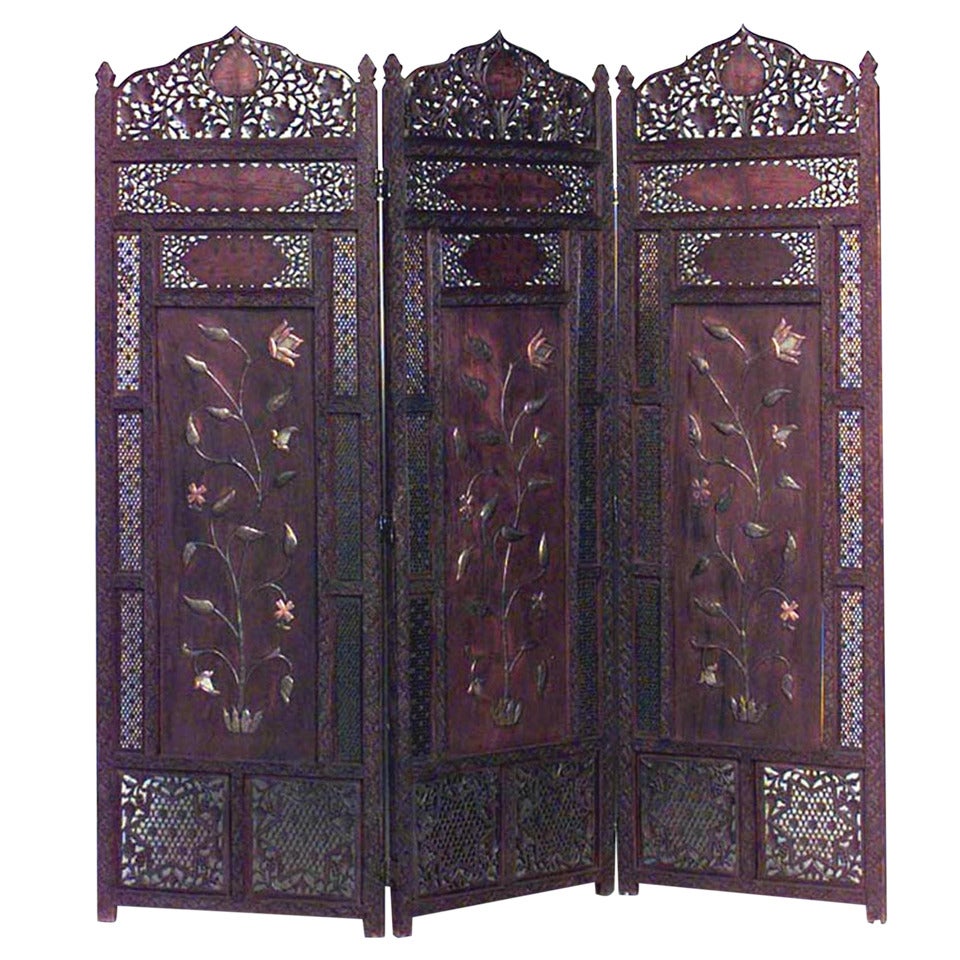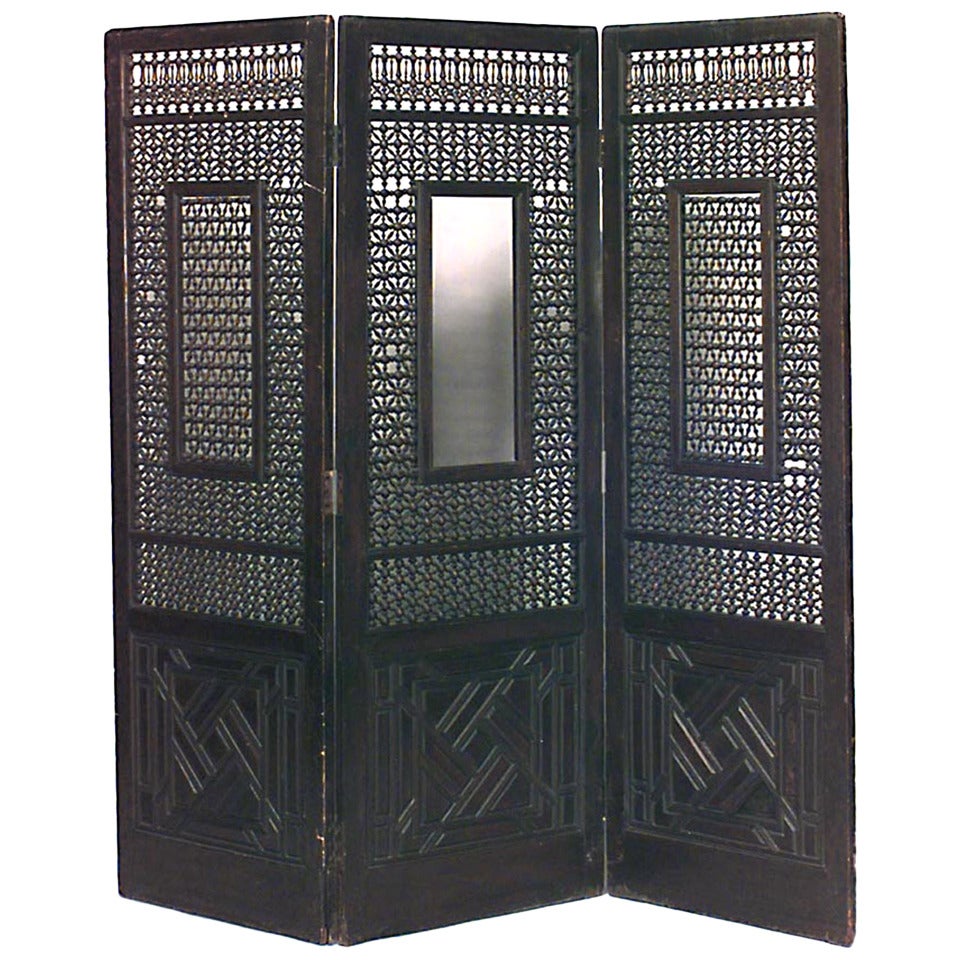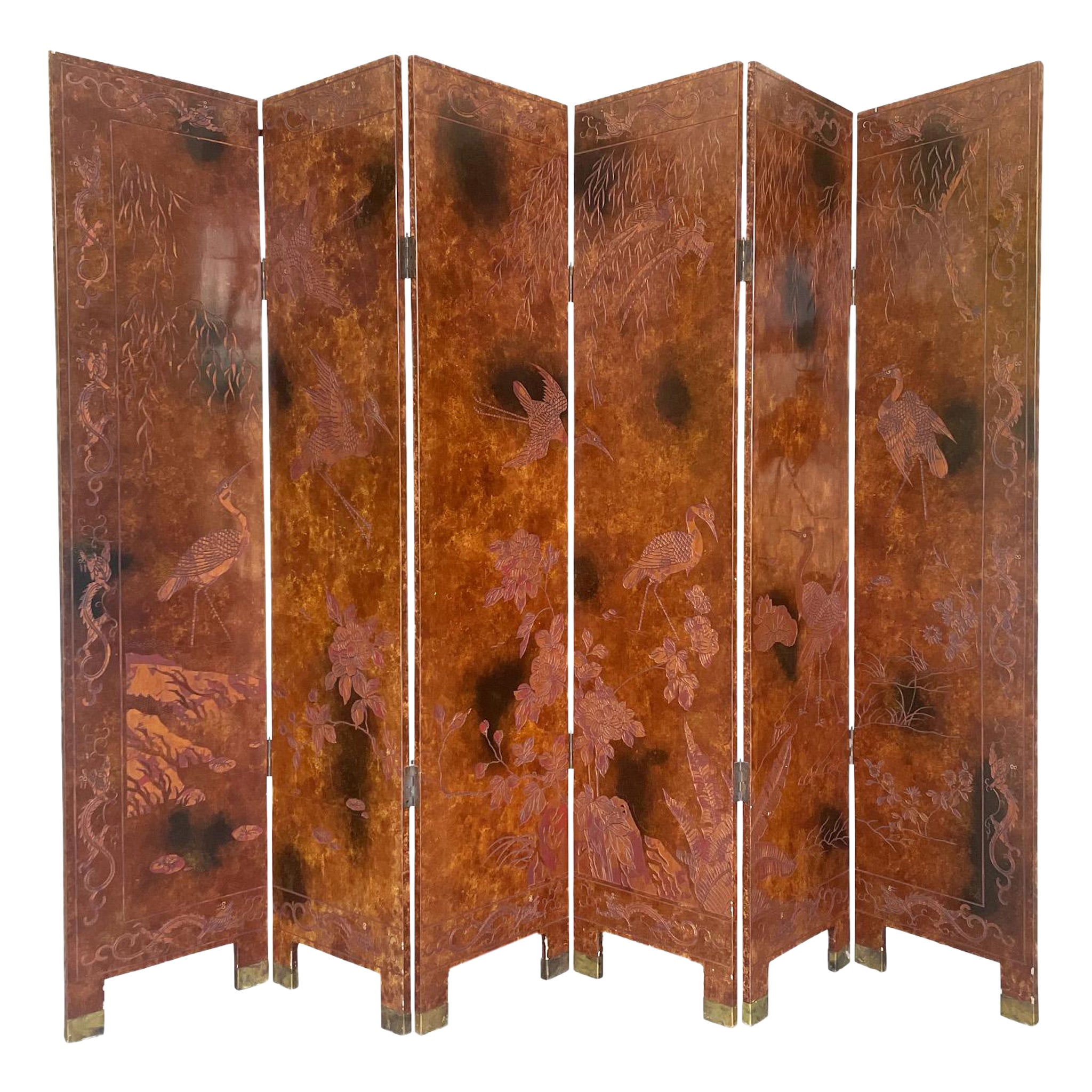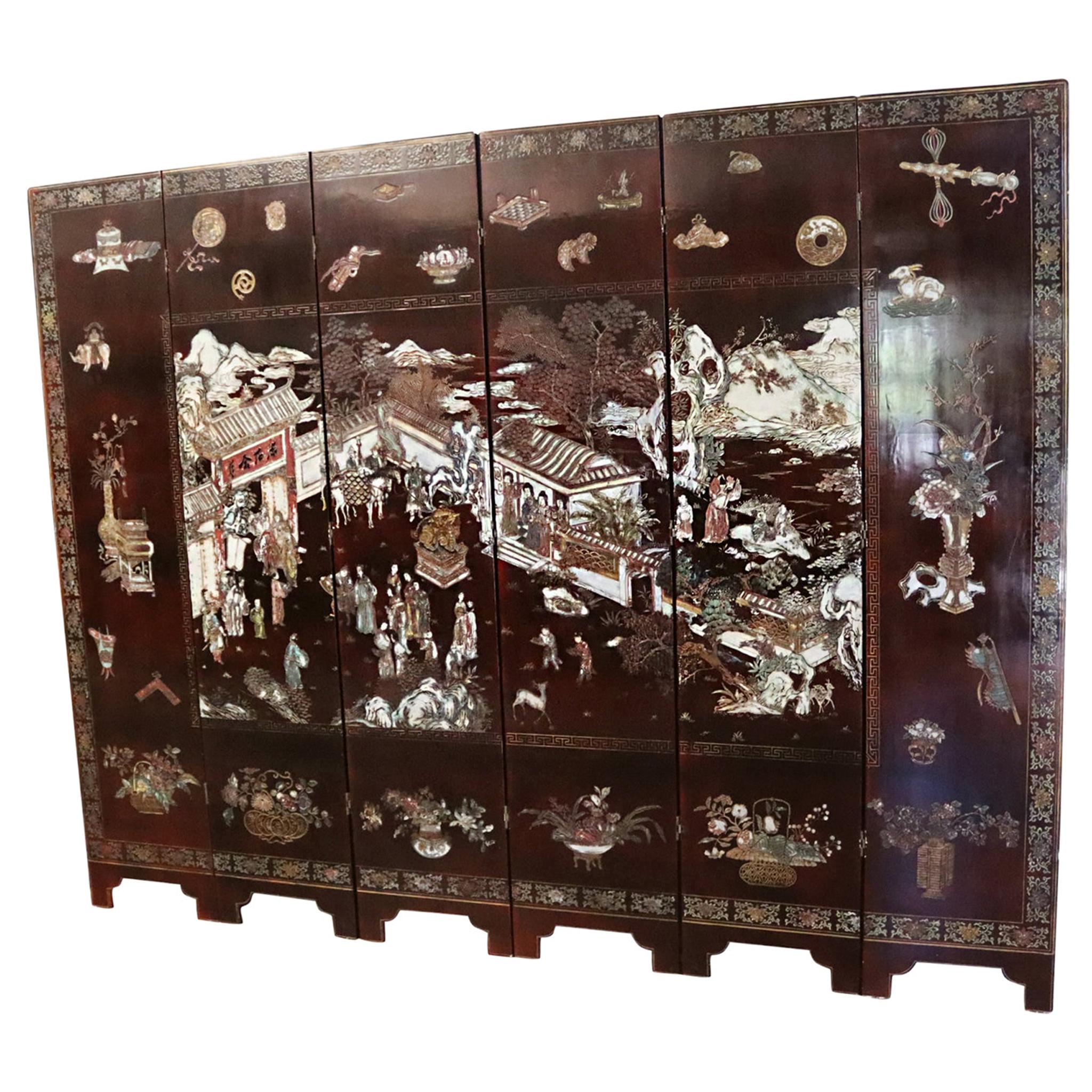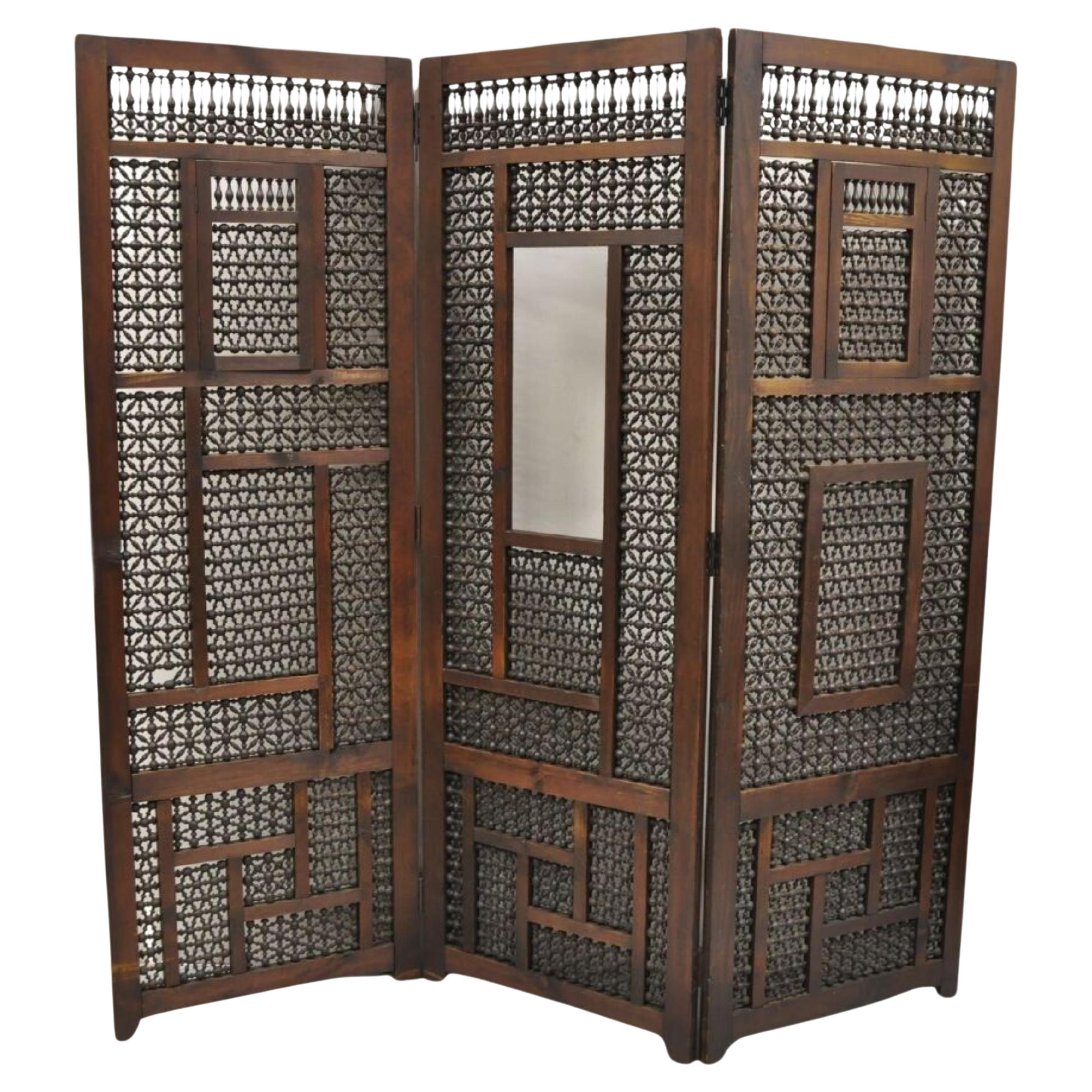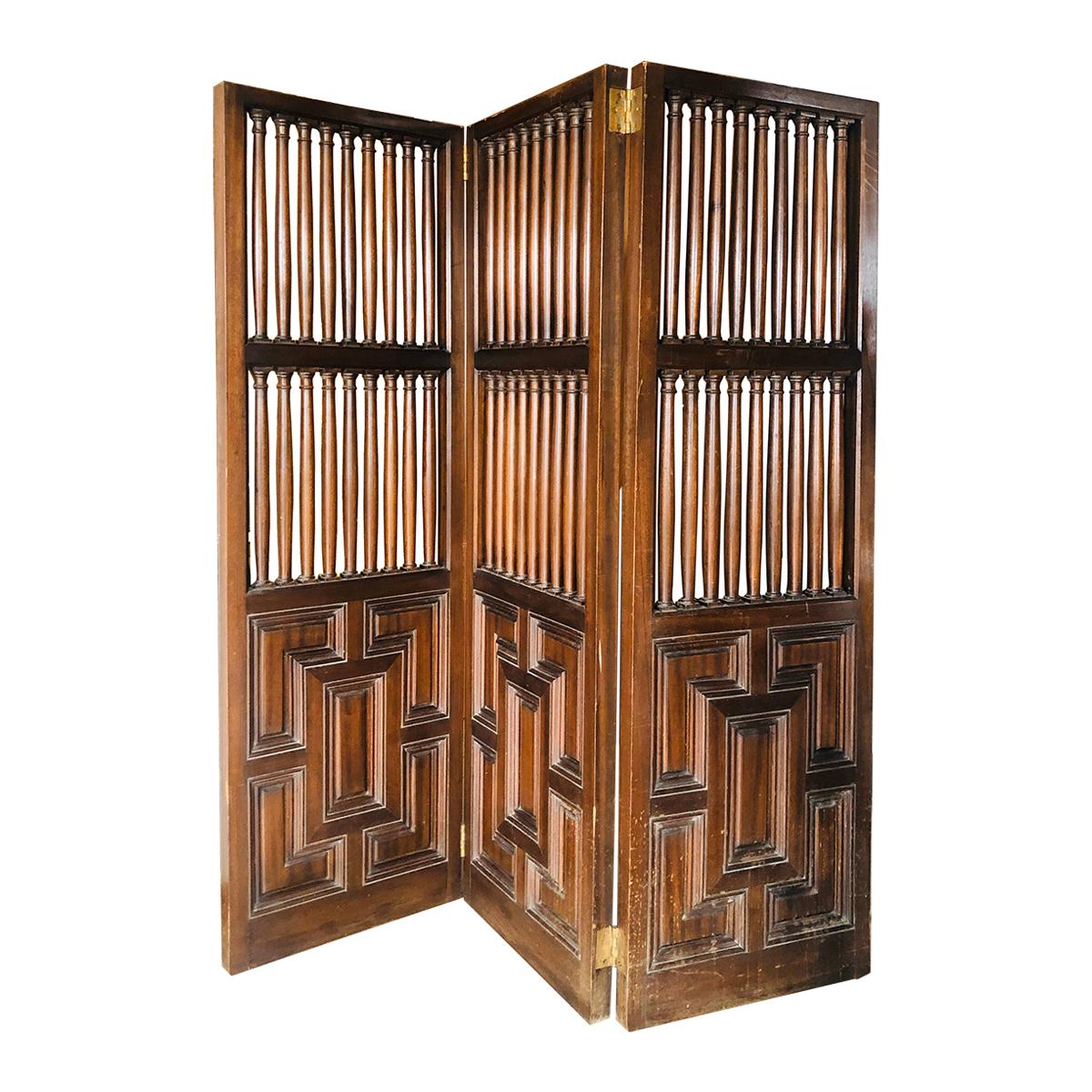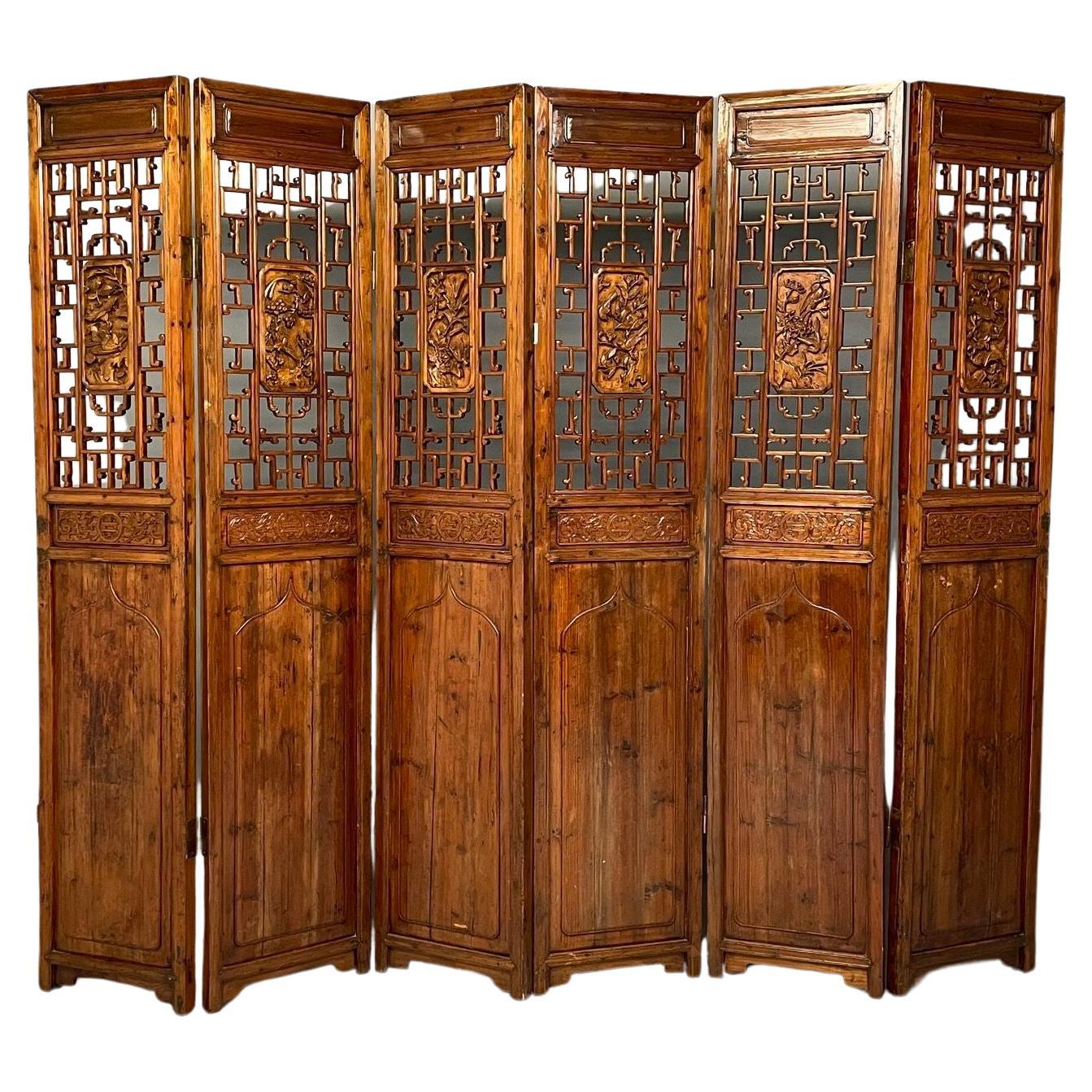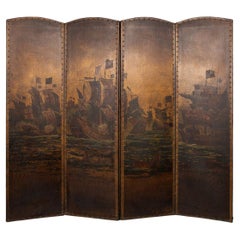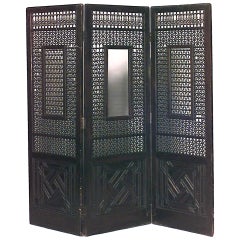
20th Century Middle-Eastern Folding Screen with Enamel Panels
View Similar Items
Want more images or videos?
Request additional images or videos from the seller
1 of 21
20th Century Middle-Eastern Folding Screen with Enamel Panels
About the Item
- Dimensions:Height: 78.75 in (200 cm)Width: 70.87 in (180 cm)Depth: 1.58 in (4 cm)
- Materials and Techniques:
- Place of Origin:
- Period:
- Date of Manufacture:20th Century
- Condition:Wear consistent with age and use. Minor fading.
- Seller Location:Royal Tunbridge Wells, GB
- Reference Number:Seller: D71561stDibs: LU1348223973642
About the Seller
5.0
Platinum Seller
These expertly vetted sellers are 1stDibs' most experienced sellers and are rated highest by our customers.
Established in 2014
1stDibs seller since 2015
368 sales on 1stDibs
More From This SellerView All
- 20th Century Italian Folding Mirror Screen 'Parma Series' Vivai Del Sud, c.1970By Vivai del SudLocated in Royal Tunbridge Wells, KentStriking 20th Century Italian mirrored screen from the 'Parma' series, by Vivai del Sud bamboo. This exquisite screen consists of bamboo palm tree motif inlay on a 3-panel mirrored s...Category
20th Century Italian Floor Mirrors and Full-Length Mirrors
MaterialsBamboo, Mirror
- 20th Century Oil Painted On Leather Room Screen, c.1920Located in Royal Tunbridge Wells, KentAntique 20th Century beautifully painted four panel dress screen depicting 17th Century battleships at sea. Painted oil on leather, each panel is finished...Category
20th Century European Screens and Room Dividers
MaterialsLeather, Paint
- 20th Century Goyard Steamer Trunk With Chevron Pattern, Paris, c.1920Located in Royal Tunbridge Wells, KentAntique 20th Century Goyard steamer trunk with drawers, the chest opens from the top and front, a perfect steamer trunk with original felt lined top...Category
20th Century European Trunks and Luggage
MaterialsBrass
- 20th Century Louis Vuitton Trunk, France c.1910By Louis VuittonLocated in Royal Tunbridge Wells, KentAn exquisite and complete Louis Vuitton trunk from the early part of the 20th century. An absolutely essential item for elite travellers of its time the trunk is adorned in the iconic LV monogrammed canvas, accented by lozine trim and brass fittings. This trunk stood as the epitome of luxury over 100 years ago, boasting an unparalleled level of sophistication and elegance, it remains a timeless masterpiece that transcends eras. The captivating allure of the Louis Vuitton trunk transforms it into more than a mere luggage accessory; it becomes a focal point for any room. With its impressive dimensions, it is perfectly suited as a striking coffee table, side table, or even as a standalone centrepiece, seamlessly integrating into any interior, whether modern or traditional. An extraordinary piece that not only pays homage to the past but also serves as a statement of unparalleled luxury in the present. A brief history about Louis Vuitton trunks: Louis Vuitton was born in 1821 to a farmer and milliner and came from a long-established working-class family in eastern France. Vuitton grew up understanding the effects of perseverance and a strong work ethic from watching his family. At the age of 16, he made the decision to walk 292 miles from his hometown to Paris to try and make a new life for himself. When he arrived the city was in the midst of industrialization with current modes of transportation evolving quickly allowing for longer journeys. With this came the need for sturdy travel pieces. Vuitton was taken as an apprentice for a successful box maker and packer named Monsieur Marechal. He learned to craft durable containers and how to pack them properly – a well-respected profession at the time.In 1854, years after he had mastered his craft and became well respected for it, Vuitton ventured out on his own to open a shop on Rue Neuve des Capucines. It was here that he began to establish himself as a luggage maker. Then, in 1858, Vuitton designed the first Louis Vuitton steamer trunk. At the time trunks had rounded tops to allow for water to run off but this did not allow for convenient stowage. Vuitton introduced a flat, yet waterproof, trunk that was easily stackable. The first of his trunks were outfitted with a grey canvas referred to as Trianon – it wouldn’t be until several decades later that the signature monogram would be introduced. With a burgeoning business, Vuitton moved his family and workplace to Asniere, where he employed twenty workers to craft his trunks. By 1900 he would have 100 employees, and in 1914 the company would more than double in size. After years of success, Vuitton began to experiment with the design of his luggage by introducing a new striped canvas pattern (1876) and later the still well-known Damier print (1888). The hand-painted patterns were developed to prevent counterfeits. Even in the late 1800s, Louis Vuitton was enough of a status symbol to warrant counterfeiting. In 1886, his son George invented and patented an ingenious locking system that made it impossible to pick the lock of their trunks. This lock is still used today. 1892 would prove to be a time of mourning for the family as Louis Vuitton passed...Category
20th Century French Other Trunks and Luggage
MaterialsBrass
- 20th Century Louis Vuitton Trunk, France c.1930By Louis VuittonLocated in Royal Tunbridge Wells, KentAn exquisite and complete Louis Vuitton trunk from the early part of the 20th century. An absolutely essential item for elite travellers of its time the trunk is adorned in the iconic LV monogrammed canvas, accented by lozine trim and brass fittings. This trunk stood as the epitome of luxury over 100 years ago, boasting an unparalleled level of sophistication and elegance, it remains a timeless masterpiece that transcends eras. The captivating allure of the Louis Vuitton trunk transforms it into more than a mere luggage accessory; it becomes a focal point for any room. With its impressive dimensions, it is perfectly suited as a striking coffee table, side table, or even as a standalone centrepiece, seamlessly integrating into any interior, whether modern or traditional. An extraordinary piece that not only pays homage to the past but also serves as a statement of unparalleled luxury in the present. A brief history about Louis Vuitton trunks: Louis Vuitton was born in 1821 to a farmer and milliner and came from a long-established working-class family in eastern France. Vuitton grew up understanding the effects of perseverance and a strong work ethic from watching his family. At the age of 16, he made the decision to walk 292 miles from his hometown to Paris to try and make a new life for himself. When he arrived the city was in the midst of industrialization with current modes of transportation evolving quickly allowing for longer journeys. With this came the need for sturdy travel pieces. Vuitton was taken as an apprentice for a successful box maker and packer named Monsieur Marechal. He learned to craft durable containers and how to pack them properly – a well-respected profession at the time.In 1854, years after he had mastered his craft and became well respected for it, Vuitton ventured out on his own to open a shop on Rue Neuve des Capucines. It was here that he began to establish himself as a luggage maker. Then, in 1858, Vuitton designed the first Louis Vuitton steamer trunk. At the time trunks had rounded tops to allow for water to run off but this did not allow for convenient stowage. Vuitton introduced a flat, yet waterproof, trunk that was easily stackable. The first of his trunks were outfitted with a grey canvas referred to as Trianon – it wouldn’t be until several decades later that the signature monogram would be introduced. With a burgeoning business, Vuitton moved his family and workplace to Asniere, where he employed twenty workers to craft his trunks. By 1900 he would have 100 employees, and in 1914 the company would more than double in size. After years of success, Vuitton began to experiment with the design of his luggage by introducing a new striped canvas pattern (1876) and later the still well-known Damier print (1888). The hand-painted patterns were developed to prevent counterfeits. Even in the late 1800s, Louis Vuitton was enough of a status symbol to warrant counterfeiting. In 1886, his son George invented and patented an ingenious locking system that made it impossible to pick the lock of their trunks. This lock is still used today. 1892 would prove to be a time of mourning for the family as Louis Vuitton passed...Category
20th Century French Other Trunks and Luggage
MaterialsBrass
- 20th Century Revelation Expanding Leather Suitcase, c.1920Located in Royal Tunbridge Wells, KentAntique early 20th Century Bridle Hide Revelation expanding leather suitcase, a hallmark of innovation from the 1920's, showcased a pioneering design that allowed for adjustable stor...Category
20th Century British Trunks and Luggage
MaterialsBrass
You May Also Like
- 19th c. Middle Eastern Filigreed Folding ScreenLocated in New York, NYNineteenth century Middle Eastern carved folding screen with three carved teak panels, brass and copper floral designs, and filigreed tops and si...Category
Antique 19th Century Screens and Room Dividers
MaterialsTeak
- 19th c. Middle Eastern Carved Teak Folding ScreenLocated in New York, NYNineteenth century Middle Eastern teak three-fold screen with a spindle and ball design and geometric design bottom panels.Category
Antique 19th Century Screens and Room Dividers
MaterialsTeak
- 20th Century Chinese Six-Panel Folding ScreenLocated in New York, NYThis richly designed Chinese folding screen consists of 6 individual panels. It was made in the 2nd quarter of the 20th Century. One side has a black lacquered ground that unfolds a ...Category
20th Century Asian Screens and Room Dividers
MaterialsWood
$4,640 Sale Price20% Off - 20th Century Chinese Coromandel 6-Panel Folding ScreenLocated in New York, NYComprised of 6 lacquered coromandel panels, this Chinese folding screen is intricately designed and expertly crafted. The panels' central design is rendered in intaglio and painted in with enamel. It depicts a stunning, elaborate courtyard scene with architecture, blossomed trees, a gathering of people in conversation, and a sprawling mountainous landscape in the background. Framing this scene is a frieze of bouquets and other precious objects. On the reverse side, we see more of the lacquered burgundy wood...Category
20th Century Chinese Paintings and Screens
MaterialsWood
- Vintage Middle Eastern 3 Panel Mashrabiya Lattice Folding Screen Room DividerLocated in Philadelphia, PAVintage Middle Eastern 3 Panel Mashrabiya Lattice Panel Folding Screen Room Divider. Item features 2 small swing "doors" on the right and left panels, open center (not sure if anythi...Category
Mid-20th Century Classical Greek Screens and Room Dividers
MaterialsWood
- 20th Century French Hand Carved Wooden Folding Screen with Three PanelsLocated in Sofia, BGVery massive and heavy wooden folding screen with three panels each one 163 per 51 cm. France, circa 1950.Category
Mid-20th Century French Screens and Room Dividers
MaterialsWood
$1,199 Sale Price55% Off
Recently Viewed
View AllMore Ways To Browse
Mother Of Pearl Inlay Panel
Indoor Screen
Middle Eastern Mother Of Pearl
Outdoor Home Accents
Mother Of Pearl Screen
Middle Eastern Panels
Middle Eastern Mother Of Pearl Inlay Furniture
Outdoor Divider
Outdoor Room Divider
Screen Eastern
Mother Of Pearl Dividers
Mother Of Pearl Inlay Screen
Antique Fabric Panel
Glass Panel Screen
Three Paneled Folding Screen
Three Panel Folding Screen
Lacquered Folding Screen
4 Panel Room Screens
